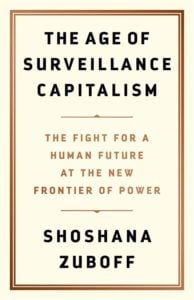Police Are Using Facial Recognition For Minor Crimes, ‘Because They Can’
In a recent court filing, the New York police department noted that it’s turned to facial recognition in more than 22,000 cases in the last three years. “Even though the NYPD claims facial recognition is only used for serious crimes, the numbers tell a different story,” said Albert Fox Cahn, the executive director of the Surveillance Technology Oversight Project. “As facial recognition continues to grow, it’s being routinely deployed for everything from shoplifting to graffiti.”
Asked for comment, an NYPD spokeswoman pointed to a 2019 opinion article by police commissioner James O’Neill titled “How Facial Recognition Makes You Safer.” In the piece, O’Neill talked about how facial recognition had been used to make arrests in murder, robbery and rape cases, but he didn’t disclose how often it was used for low-level crimes. The department’s facial recognition policy, established in March, allows the technology to be used for any crime, no matter the severity. Without any limits, police have more frequently used the technology for petty thefts than the dangerous crimes, privacy advocates say. Before Amazon put a moratorium on police use of its Rekognition face-identifying software, the program was used in a $12 shoplifting case in Oregon in 2018…
Without any limits, police can use facial recognition however they please, and in many cases, arrested suspects don’t even know that the flawed technology was used… Attorneys representing protesters in Miami didn’t know that police used facial recognition in their arrests, according to an NBC Miami report. Police used facial recognition software in a $50 drug dealing case in Florida in 2016 but made no mention of it in the arrest report.
The article also notes that as recently as this Tuesday, Hoan Ton-That, the CEO of facial recognition startup Clearview AI “said it isn’t the company’s responsibility to make sure its technology is being properly used by its thousands of police partners.
“Though the company has its own guidelines, Ton-That said Clearview AI wouldn’t be enforcing them, saying that ‘it’s not our job to set the policy as a tech company…'”

 The challenges to humanity posed by the digital future, the first detailed examination of the unprecedented form of power called “surveillance capitalism,” and the quest by powerful corporations to predict and control our behaviour. Shoshana Zuboff provides startling insights into the phenomenon that she has named surveillance capitalism. The stakes could not be higher: a global architecture of behavior modification threatens human nature in the twenty-first century just as industrial capitalism disfigured the natural world in the twentieth. Zuboff vividly brings to life the consequences as surveillance capitalism advances from Silicon Valley into every economic sector. Vast wealth and power are accumulated in ominous new “behavioral futures markets,” where predictions about our behavior are bought and sold, and the production of goods and services is subordinated to a new “means of behavioral modification.”
The challenges to humanity posed by the digital future, the first detailed examination of the unprecedented form of power called “surveillance capitalism,” and the quest by powerful corporations to predict and control our behaviour. Shoshana Zuboff provides startling insights into the phenomenon that she has named surveillance capitalism. The stakes could not be higher: a global architecture of behavior modification threatens human nature in the twenty-first century just as industrial capitalism disfigured the natural world in the twentieth. Zuboff vividly brings to life the consequences as surveillance capitalism advances from Silicon Valley into every economic sector. Vast wealth and power are accumulated in ominous new “behavioral futures markets,” where predictions about our behavior are bought and sold, and the production of goods and services is subordinated to a new “means of behavioral modification.”